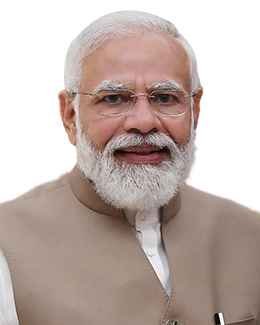Narendra Damodardas Modi: Narender Modi was conceived 17 September 1950. Modi was brought up in Vadnagar in northeastern Gujarat. His record of assisting his dad with selling tea at the Vadnagar railroad station has not been dependably supported. At age 18, he was hitched to Jashodaben Modi.
He was the third of six youngsters brought into the world to Damodardas Mulchand Modi (c. 1915-1989) and Hiraben Modi (1923-2022). Modi finished his higher auxiliary training in Vadnagar in 1967.
Narendra Modi’s work as State leader of India has been complex and questionable, producing both recognition and analysis. Assessing his “well known” work relies upon your viewpoint and needs. Here is a fair outline of a portion of his key drives: Drives commended by allies: •
Swachh Bharat Abhiyan (Clean India Mission): Sent off in 2014, this mission planned to further develop disinfection and cleanliness across India. It’s credited with expanding latrine access and bringing issues to light about tidiness. •
Pradhan Mantri Jan Dhan Yojana (PMJDY): This drive expected to grow monetary incorporation by giving ledgers and check cards to a huge number of low-pay families. It’s attributed with helping admittance to monetary administrations and advancing computerized exchanges. •
Make in India: This program meant to draw in unfamiliar venture and lift homegrown assembling. It’s credited with making new positions and advancing monetary development in certain areas.
Computerized India: This drive zeroed in on advancing computerized proficiency and framework advancement. It’s attributed with further developing admittance to innovation and taxpayer supported organizations. •
Framework improvement: Modi’s administration has put vigorously in foundation projects like streets, parkways, and rail routes. Allies consider this pivotal for monetary development and availability. Drives censured by rivals: •
Demonetization: The abrupt withdrawal of high-group banknotes in 2016 caused critical monetary disturbance and difficulty for the vast majority, especially casual organizations and poor people. Pundits contend it neglected to accomplish its expressed objectives of controling defilement and dark cash. •
Labor and products Expense (GST): The execution of a cross country GST was complicated and confronted difficulties. Pundits contend it troubled private companies and excessively impacted specific areas. •
Strict polarization and common liberties concerns: Pundits blame Modi’s administration for advancing Hindu patriotism and victimizing minorities, prompting expanded strict polarization and basic freedoms infringement. •
Ecological strategies: Pundits contend Modi’s administration has debilitated natural guidelines and focused on financial advancement over natural insurance. It means quite a bit to note: •
Assessing the viability and effect of these drives is mind boggling and challenged. Their prosperity relies upon different elements, including execution, financial circumstances, and social setting. •
This is certainly not a thorough rundown, and there are numerous different drives and arrangements related with Modi’s administration. Eventually, whether Narendra Modi’s work is “popular” or “scandalous” relies upon your point of view and needs. It’s essential to consider different perspectives and dependable sources prior to framing an educated assessment.








